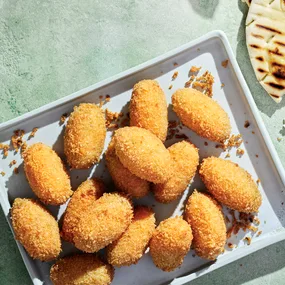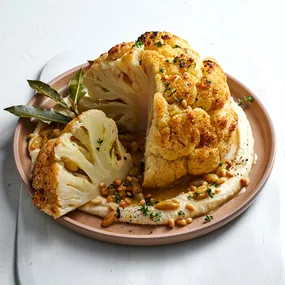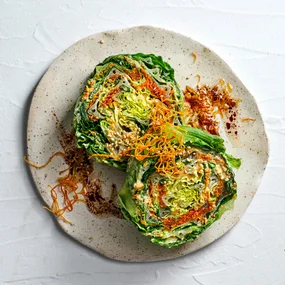“Texas is world-renowned for barbecuing a mean brisket, the flat and fatty slab of meat, cut from the cow’s lower chest,” says Stone. “Cooking a simply seasoned brisket low and slow on a smoker (or kettle barbecue when barbecuing at home), gradually rendering the gummy white fat while simultaneously infusing smoky flavour into the meat, is a labour of love. Although time-consuming, briskets are not difficult to cook. And while you’ll note that this one takes a whopping 12 hours to cook, don’t be alarmed if your brisket needs another hour or so – this timing is an approximation, and greatly depends on the size of your brisket and heat of your barbecue.” The brisket can also be cooked in an oven (see note).
Ingredients
Method
Main
Note If you don’t have a kettle barbecue, you can roast the salt and pepper-crusted brisket on a tray in a 120C oven until the dark crust or “bark” forms and the internal temperature reaches 95C on a thermometer probe (7½-8 hours). Wrap cooked brisket as tightly as possible in a large piece of unwaxed butcher’s paper about 60cm x 75cm and rest at room temperature for 1 hour. Serve as above.
How to prepare your barbecue
1 To prepare your barbecue for the 12-hour brisket, place a couple of pieces of newspaper in the bottom of a chimney charcoal starter. Place 12 charcoal briquettes on top of the chimney starter and light the newspaper. Allow the briquettes to burn until they’re all completely covered in a thin layer of ash (15-20 minutes).
2 On the bottom rack of a kettle barbecue, dump about two-thirds of the bag of unlit briquettes into the centre of the barbecue, then build a circle three-quarters of the way around the perimeter of the barbecue two briquettes wide. Place another two-briquette-wide layer on top and reserve any extra briquettes.
3 Place a 20cm-square disposable roasting pan on the side of the barbecue opposite the briquette chain and bring 1 litre of water to the boil. Using tongs, carefully place the lit briquettes at one end of the briquette chain so the lit briquettes are just nestled against the unlit ones. Place a chunk of wood where the lit and unlit briquettes meet and place three more chunks of wood on top of the briquette chain at 5cm intervals (this allows them to ignite about every 30-45 minutes). Pour the boiling water into the aluminium pan.
4 Position the top barbecue grate in place, then close the lid and monitor the temperature inside the barbecue (a digital probe thermometer resting on the top grate is best for this). Open or close the lid vents as needed to maintain a constant 120C.
Drink Suggestion: With the brisket, barbecue sauce and Southern beans, go for the most powerful red zinfandel you can find. For brisket paired with watermelon rind pickles, try a spicy grenache; brisket, bread and coleslaw will go down well with a big, hoppy American-style pale ale. Drink suggestion by Max Allen
Notes









